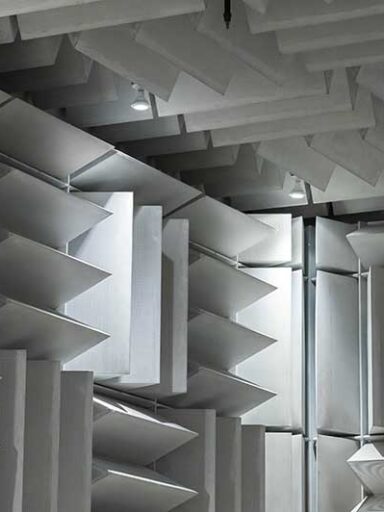Noise is an often-overlooked factor that significantly impacts productivity and well-being in commercial spaces. From bustling offices to vibrant retail environments, excessive noise can create distractions, increase stress levels, and reduce overall efficiency. Anti-noise protection solutions are becoming essential tools in the design and management of these spaces, offering a pathway to improved productivity and employee satisfaction.
With advancements in technology and a growing focus on workplace wellness, businesses are increasingly investing in acoustic solutions to optimize their environments. This article explores the science behind noise reduction, its effects on productivity, and the tools and strategies available for creating quieter, more effective commercial spaces.
The Impact of Noise on Productivity
Noise pollution in commercial settings can have far-reaching effects on productivity and mental health. Studies have consistently shown that excessive noise disrupts concentration, hampers communication, and leads to increased error rates in workplaces.
Cognitive Overload
In environments such as open-plan offices, constant background noise forces employees to expend additional mental energy to filter out distractions. This cognitive overload reduces focus, leading to slower task completion and lower quality of work.
Increased Stress Levels
Prolonged exposure to noise triggers the release of stress hormones, such as cortisol, which can lead to fatigue, irritability, and long-term health issues. In commercial spaces like call centers or retail outlets, this stress can affect both employees and customers, diminishing their overall experience.
Communication Barriers
Effective communication is vital in commercial environments. Excessive noise makes it difficult for employees to hear and understand one another, leading to miscommunication, reduced collaboration, and inefficiencies. In customer-facing roles, noise can hinder interactions, resulting in a less satisfying service experience.
The Role of Anti-Noise Protection
Anti-noise protection refers to strategies and technologies designed to reduce unwanted sound in commercial spaces. These solutions improve acoustic conditions, creating environments where employees and customers can focus, communicate, and interact more effectively.
Soundproofing Materials
One of the most common approaches to noise reduction involves the use of soundproofing materials in building design and renovation. These materials include:
- Acoustic Panels: Installed on walls or ceilings, these panels absorb sound waves, reducing echoes and reverberation.
- Carpets and Curtains: Soft furnishings can dampen noise by preventing sound waves from bouncing off hard surfaces.
- Double-Glazed Windows: These are particularly effective at blocking external noise in urban environments.
Noise-Canceling Technology
Modern anti-noise protection often incorporates noise-canceling technology, which uses active sound waves to counteract unwanted noise. This is especially useful in settings like:
- Open-Plan Offices: Noise-canceling systems can create “zones of silence,” allowing employees to focus on tasks without distractions.
- Retail Stores: Strategic use of noise-canceling speakers can enhance the ambiance by reducing background noise.
Layout and Design Adjustments
The design and layout of a commercial space can significantly influence its acoustic properties. Businesses can reduce noise levels by:
- Creating Quiet Zones: Designating areas for focused work or private conversations.
- Using Partitions: Dividers and barriers help contain noise within specific areas, improving overall acoustic conditions.
- Optimizing Furniture Placement: Strategic arrangement of desks, shelves, and other furniture can minimize noise propagation.
The Link Between Noise Reduction and Productivity
Investing in anti-noise protection offers measurable benefits for productivity in commercial spaces.
Enhanced Focus and Efficiency
Reducing noise levels helps employees concentrate on their tasks without unnecessary distractions. In industries where precision and attention to detail are critical, such as finance or healthcare, this can lead to significant performance improvements.
Improved Communication
Quieter environments facilitate better communication between team members, enabling more effective collaboration and problem-solving. In customer service settings, clear communication enhances the overall experience, fostering loyalty and trust.
Boosted Employee Well-Being
A quieter workspace reduces stress and fatigue, contributing to higher job satisfaction and lower turnover rates. Employees in well-designed acoustic environments report feeling more valued and supported, which can lead to greater engagement and productivity.
Positive Customer Experience
In retail and hospitality spaces, anti-noise protection creates a more pleasant atmosphere for customers. Reduced noise levels can make shopping or dining experiences more enjoyable, encouraging repeat visits and boosting revenue.
Case Studies in Anti-Noise Solutions
Many businesses have successfully implemented anti-noise protection strategies to enhance productivity and customer satisfaction.
Example: Open-Plan Offices
A leading tech company redesigned its open-plan office to include sound-absorbing materials and noise-canceling systems. Employees reported a 30% increase in productivity and a significant reduction in stress levels, attributed to the quieter workspace.
Example: Retail Stores
A major retailer installed acoustic panels in its flagship store to minimize background noise. The result was a more enjoyable shopping experience, with customer satisfaction scores increasing by 15%.
Example: Hospitality
A hotel chain integrated anti-noise technologies into its design, ensuring quieter guest rooms and meeting spaces. This not only improved guest reviews but also attracted more business travelers seeking distraction-free environments.
Emerging Technologies in Anti-Noise Protection
Innovations in anti-noise technology continue to push the boundaries of what is possible in commercial spaces.
AI-Powered Noise Management
Artificial intelligence is being used to monitor and control noise levels in real time. AI systems can adjust soundproofing measures or activate noise-canceling devices automatically based on environmental conditions.
Smart Acoustic Materials
Smart materials, such as those with tunable acoustic properties, offer dynamic solutions for noise reduction. These materials can adapt to changing noise levels, providing optimal performance in diverse settings.
Virtual Acoustic Design
Virtual reality tools enable architects and designers to simulate and optimize acoustic conditions during the planning phase of a commercial space. This ensures that noise reduction measures are integrated seamlessly into the overall design.
Anti-noise protection is no longer a luxury but a necessity for commercial spaces aiming to enhance productivity and well-being. By reducing distractions, improving communication, and fostering a positive atmosphere, these solutions deliver tangible benefits for employees and customers alike.
As businesses continue to prioritize workplace wellness and customer satisfaction, the adoption of advanced acoustic solutions will become even more widespread. With ongoing technological advancements, the future of noise reduction promises even greater efficiency and innovation, helping organizations create environments that empower their people to thrive.



